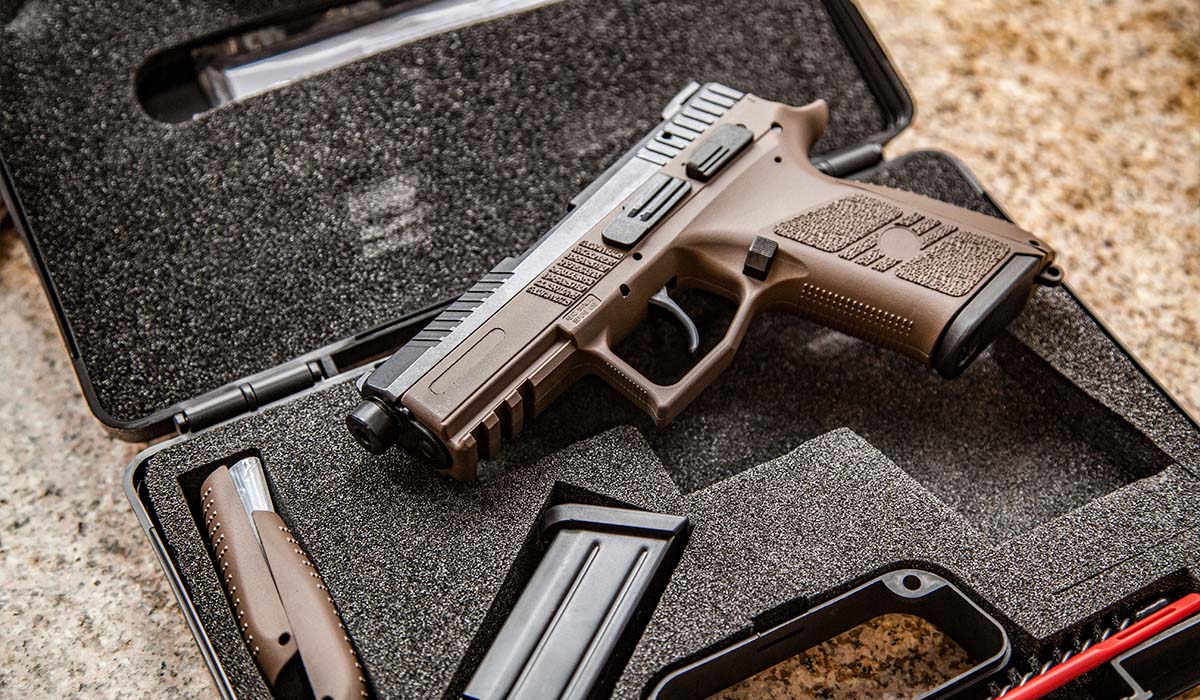Believe it or not, that is a huge question. For a little background, I am a firearms instructor and teach 4 to 6 classes monthly on Basic and Conceal Carry/Defensive shooting. I work at a reputable big box store in the firearms department, giving lectures frequently on personal protection techniques and tools. That is just a small snapshot of my background to provide some insight.
In each scenario, I am asked what is the best gun for personal protection. Most responses could look like: “My friend, who is a cop, said I should buy this one,” or “I read about this one and it looks like a good one.” Naturally, all these have some validity but none have any real substance.
Yes, there are lots of magazines that you can read about personal protection handguns. And there are at least a hundred websites you can read about the same topic. Many are written by well-trained and highly experienced professionals, and some are clearly not. So you are presented with a dilemma.
Who and what is right?
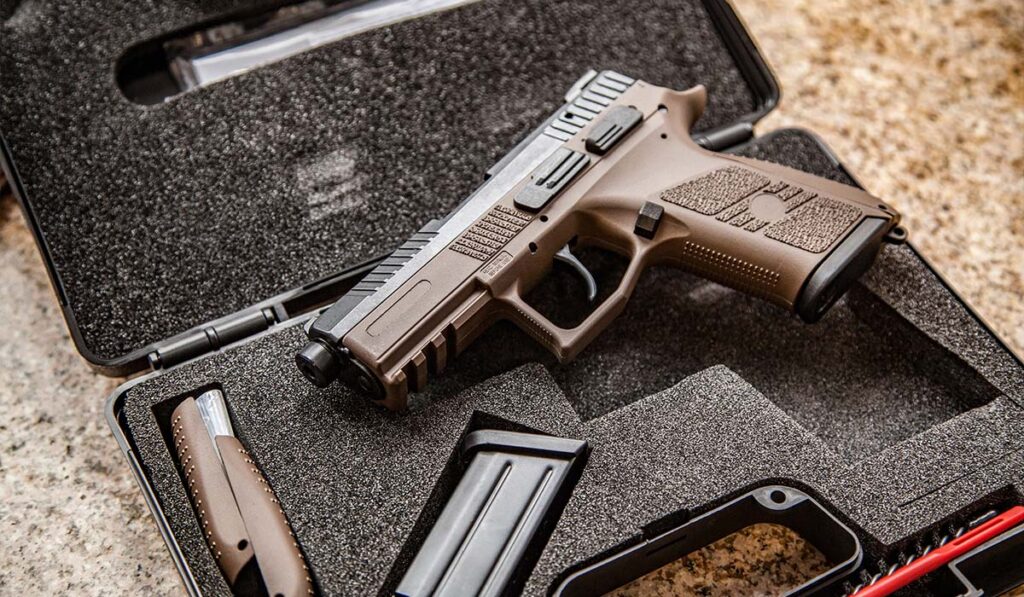
Because every week, the websites you read tell you about the BEST handgun on the market today and every month, the cover of your favorite gun magazine has an article about the BEST personal protection handgun on the market. This just complicates your decision-making.
So let’s go back to basics. But I must say one thing before I do that with you. Yes, I have MY favorite handgun that I feel is the BEST personal protection weapon. But I feel it may be helpful for you to review the basics of choosing your personal protection handgun.
Here are the characteristics I feel you should consider when choosing your next personal protection handgun. These characteristics should be researched and evaluated in this order.
Manufacturer:
I feel one of the most important aspects of buying a handgun for personal protection is the manufacturer of your firearm. Here are my reasons why. First and foremost, you want the best quality you can afford.
This is a tool that you are buying for a time when your life or someone else’s life is in danger. You want something that is going to be very dependable, reliable, and has reputation for high quality.
If you are truly buying this weapon for personal protection, then that means you are going to be shooting it frequently as you practice your shooting skills. Thus, it needs to be a firearm that can stand up to lots of shooting.
I personally look for manufacturers that have a long-standing reputation for providing handguns to the military or large government agencies. Why? Because in most cases, they do the most extensive and critical evaluations of the weapons and follow very strict rules about compliance.
Secondly, in most cases, the handguns they use are used often and in a wide range of environments, so they know if they work when you need them or not.
Warranty:
This a very important aspect of buying your firearm that is related to the characteristics mentioned above. If the manufacturer is of high quality, then they will most likely offer a very good warranty on their handguns.
Some manufacturers offer a lifetime warranty, so you know they stand behind their product. Others offer warranties of decreasing coverage of the time. You also want to know what modifications you might do to the handgun will void your warranty.
Such as, will polishing the trigger void the warranty, or will shooting +P ammo void the warranty? These are important factors you need to take into consideration.
Semi Auto/Revolver:
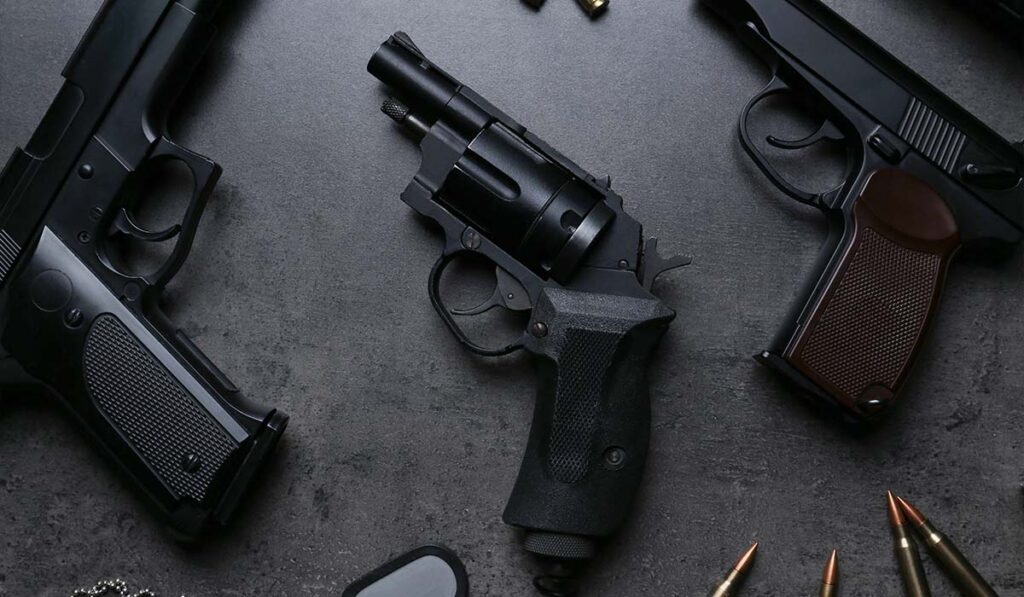
This is most likely one of the best areas of diversion. Many like a revolver because they say it is “simple” and “easy” to use.
I personally am not a fan for two reasons. First, I want lots of bullets if something bad should happen, and I need a firearm, and a revolver does not meet that requirement. Secondly, most revolvers that a very long and hard trigger pull.
I feel that increases the likelihood you will not shoot the weapon accurately.
I prefer semi-automatics for two reasons. First, in most cases, they allow you to have more bullets. And to me, that is very important. Secondly and equally important, I like the trigger pull on semiautomatics. We will go more into this below.
But, having lots of bullets and being able to easily pull the trigger are two factors I find very valuable in a personal protection scenario.
Grip:
This is the key physical factor of buying your personal protection handgun. I cannot stress how important this factor plays in your ability to hold, shoot and control your handgun. There are three factors in gripping a handgun technique, weight, and size.
The first part of determining your grip on a handgun is to know HOW to grip a handgun. If you do not know how to properly grip a handgun, you will most likely make a huge error when buying your weapon.
I watch daily as people looking to buy their handgun grip it incorrectly. I am amazed at how many salespeople do not try to help or correct the customer. Thus, LOTS of people buy a handgun never without ever property gripping it.
Then they wonder why they do not like shooting their handgun and why they are not accurate with it. It all comes back to grip.
The next two components of gripping can be considered as one. Weight and Size. Both play a critical role in managing a handgun, and thus are very important.
First is the visual aspect of the handgun. Most people look at a handgun and, on looks alone, determine if it is too big. Without even holding the firearm, they have already determined it is too big. Thus, they rule out very acceptable handguns on looks alone.
Secondly, they want something small, and light to it is easy to carry and hold. But they do not understand that the weight of the handgun correlates to the recoil. Thus the lighter the weapon, the more recoil, and conversely, a heavier weapon reduces recoil.
You want to find a handgun that might feel a little heavy in your and at first but is very easy to grip.
The best way to address these issues is to handle numerous firearms and to understand that small is not necessarily good and slightly heavy is not necessarily bad.
Once most people have the opportunity to grip numerous firearms and really get a feel for a proper grip, they soon realize that weight and size make a big difference and change the original concept of their selection.
I have seen so many people walk into the range or store with one concept of what they were going to buy and walk out with something different, then coming back and praising they were so glad they did not go but what they originally thought they wanted.
I feel strongly this is where a good knowledgeable salesperson comes into play. So when you buy your first firearm or if you are a novice buyer, make sure you ask what the salesperson’s background is before you listen to his pitch. And make sure he gives you a comparison of firearms to evaluate.
Trigger Control:
Trigger control is essential to accuracy. Trigger pulls can be hard, up to 15 lbs, staged, and hard to reach with your finger. Thus, it is essential that you choose a handgun with a trigger you can easily reach and comfortably pull.
The harder the trigger is to reach or pull, the less accurate you will be. Thus, when evaluating a handgun for personal protection, it is imperative that you have the opportunity to hold the handgun and place your finger on the trigger.
Then whenever possible, you should be allowed to dry fire the weapon. That is the ONLY way to fully appreciate and evaluate the trigger pull.
What you want in a trigger pull is the following features, one that is within your finger’s reach when your finger is correctly on the trigger, a smooth pull with no roughness, easy, relatively short, and a short trigger reset.
All of the features are important to selecting a handgun and contribute to your shooting experience.
Caliber:
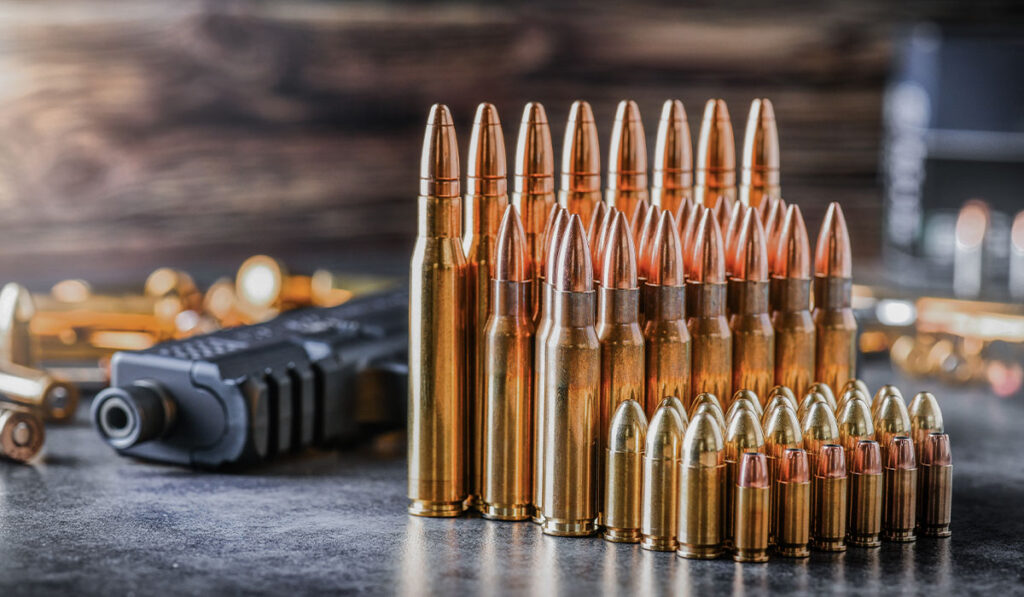
Bullets have gone through tremendous improvements over the last twenty years. The weights, velocity, materials, and aerodynamics of bullets are incredibly better today than they were even ten years ago.
Making the choice of what caliber to buy, is another area where there are numerous misconceptions.
The first is in the area of knockdown power. This term is highly misunderstood and misused. There is the misconception that a bigger bullet results in more knock-down power. Recent studies have demonstrated that this term is widely incorrect.
When a human is shot with traditional bullets used for personal protection, they do not go flying through the salon doors nor get knocked back as you see in the movies. If a human is hit in a vital area, they just collapse. There are numerous videos on the internet of humans being shot, and when hit with a lethal shot, they just collapse. So knock-down power is way overused in relation to its actual effect.
Another misconception is penetration. Most think that bigger bullets penetrate deeper and cause more damage. When actually, smaller 9mm bullets have greater penetration power than 45 caliber bullets. Based on substantial research, the FBI has reverted back to 9mm bullets for their agents for three important reasons.
One, they penetrated further, thus doing more damage. Secondly, the agents that shot 9mm weapons were more accurate than those shooting 40 and 45s, and finally, the lethality of the shots was the same if a vital area was hit.
So why is 9mm the best caliber:
- It is the least expensive of all personal protection ammo, so you are more likely to practice more
- More handguns are made in 9mm than any other caliber, so you are more likely to find a 9mm handgun that fits your hand
- Most 9mm handguns allow for high-capacity magazines, so you have lots of bullets when you need them. Many 9mm magazines hold more ammo than the smaller 380 magazines.
- The recoil of 9mm is easily manageable.
- The lethality is the same as larger bullets when a vital area is hit
- More people carry 9mm than any other caliber. Thus, you could share ammo if needed
Round Capacity:
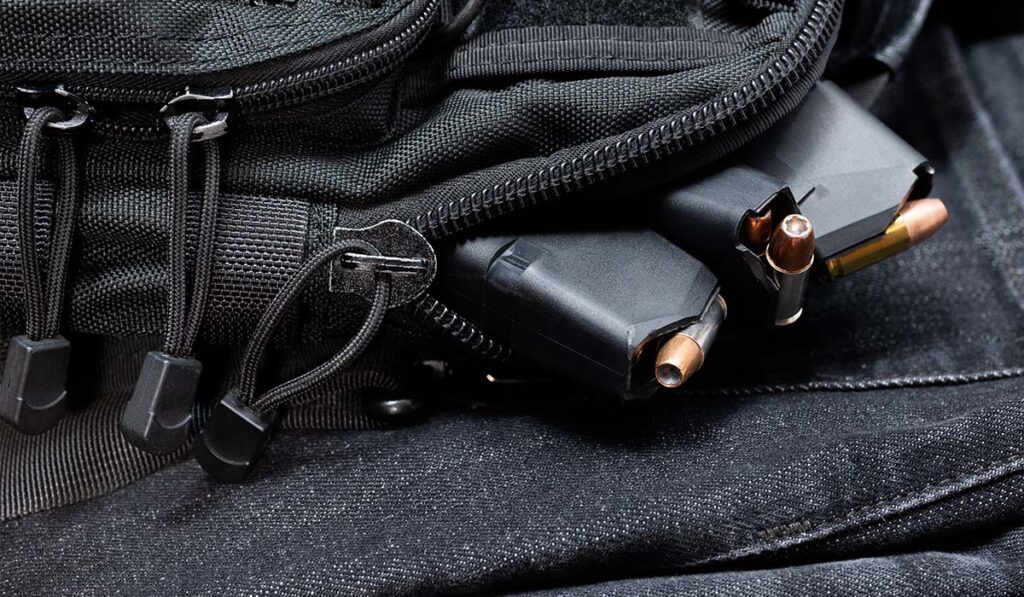
As mentioned a few times in this article, I want to have as many rounds as possible if something goes wrong. No matter how well you are trained, you will miss a lot if a bad event occurs and you need to fire your weapon while running, taking cover, hiding, or avoiding getting shot.
Numerous times a day, novice shooters tell me they only need a gun with five or six rounds because they will hit the target in the first one or two shots.
They have not watched any videos of our heroic men and women in law enforcement in shot-outs, nor have they watched our brave American hero’s in combat firefights. As good a well trained as these professionals are, they still miss a lot.
Not because they are bad by any means, they are exceptional. But it is exceedingly hard to hit a moving target when you are being shot at, beat up, or mugged.
So the more rounds, the better.
Those are the features and characteristics you want in your personal protection handgun. Each has its own importance and value in helping you choose the correct handgun for your personal use. Not all handguns are meant for everyone. You need one that fits you.
Here are my choices in order of preference and why:
Sig P320
Manufacturer – Sig Sauer has produced handguns for many of our elite fighting forces and government agencies for a long time, including but not limited to: SEALS, Secret Service, Air Marshals, and numerous law enforcement agencies.
Warranty – Lifetime
Grip – Very excellent and comfortable texture, ergonomically and anatomically correct, and a great weight that allows for reduced recoil and easy handling.
Trigger Control – Excellent trigger. One of the hallmarks of this handgun, very short, smooth trigger reset
Caliber – 9mm, but the 320 is modular. The trigger and firing assembly are easily removed from the gun, and barrels and frames in 380, 40, and 45 can be purchased from Sig. You get multiple caliber capabilities with this handgun.
Round Capacity: comes with two 15 rounds mags, can take 17-round mags, and also comes with a plastic holster.
Ruger SR9C
Manufacturer – Ruger high-quality firearms made since 1949
Warranty – Lifetime
Grip – very ergonomic grip, nice texture. Very good weight
Trigger Control – Good but can be a little rough
Caliber – 9mm
Round Capacity – comes with two 15 rounds of mags
Glock 19
Manufacturer – Glock was the first to make polymer striker fire guns and has held its place in that market for a long time. Glock has produced handguns for many military branches, elite forces, the FBI, and law enforcement agencies.
Warranty – Limited and several disqualifying factors, including using reloaded ammo.
Grip – Nice grip, good stippling, lightweight.
Trigger Control – excellent trigger. I experience that many people push the handgun when shooting it by not getting their finger on top of the trigger safety.
Caliber – 9mm
Round Capacity – comes with two 15-round mags

